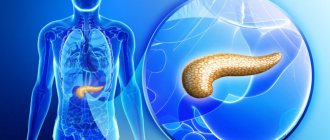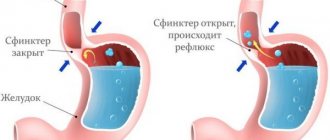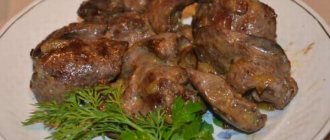The pancreas is the main source of food enzymes that regulate the digestion of proteins, fats and carbohydrates. It produces the hormone insulin, which is responsible for the formation and elimination of glucose in the blood, which serves as the main source of energy in the human body.
Bad habits and poor nutrition disrupt the functioning of the pancreas. The consequence is inflammation and the development of serious diseases that reduce insulin production and lead to diabetes. One of the ways to prevent painful attacks can be visceral breathing exercises.
Directions of physical therapy for pancreatitis
The main objectives of exercise therapy for chronic or acute pancreatitis are:
- Improving blood flow in the tissues of the gland;
- Prevention of congestive processes in the lungs and lower extremities during prolonged bed rest;
- Restoring strength and energy after feeling better;
- Normalization of stool;
- The fastest possible removal from the body of toxic substances formed in the inflamed organ.
In addition, regular training helps improve the psycho-emotional state of a patient with pancreatitis and suppress depression.
The following areas of exercise therapy most fully help to implement these tasks:
- Breathing (respiratory) gymnastics;
- Static muscle training;
- Yoga;
- Callanetics;
- Qigong;
- Pilates;
- Swimming;
- Hiking.
When can you start training?
Against the background of a pronounced exacerbation of pancreatitis, a person’s serious condition does not allow him to exercise even moderate physical activity. The patient experiences intense girdle pain in the upper abdominal cavity, nausea, vomiting, and diarrhea. Due to dehydration, general weakness, headaches, and shortness of breath occur. During this period, any loads should be completely eliminated.
Gradual activation is allowed to begin after the condition has stabilized: pain has been relieved, vomiting and diarrhea have stopped. You can start training with breathing practices: they should be within the capabilities of a weakened patient and will give the necessary impetus to normalize well-being, accelerating recovery processes. As strength increases, active physical training is added, starting with a minimum duration, so as not to overwork the patient. Other loads (walking, swimming, Pilates) can be added after the condition is completely normalized.
Carefully!
For diseases of the pancreas, abdominal exercises are contraindicated - they increase pressure in the common bile and pancreatic ducts, provoking early activation of digestive enzymes and the development of inflammation of the organ.
Treatment of the pancreas is a long process. Acute pancreatitis often becomes chronic, and then in the future it is necessary to regularly perform a complex of physical therapy for preventive purposes.
Among the foods that the gland “likes”:
Vegetables stewed in water or in their own juice (Brussels sprouts, zucchini, carrots, pumpkin). Lightly dried yeast-free bread (prefer wholemeal flour). Natural low-fat fermented milk products, homemade yogurt without additives. The pancreas is easily damaged by toxins, ethanol and viruses, and its function worsens under stress and overwork. To maintain organ health, eat right, drink more clean water, and stop smoking and alcohol.
Physical exercises for the pancreas in case of disease
There are therapeutic exercises that are effective for acute and chronic pancreatitis. They not only improve the patient’s well-being, but also prevent the development of complications and concomitant diseases such as cholecystitis and diabetes.
Exercises for chronic pancreatitis
Loads for pancreatitis should be dosed, not causing discomfort in the abdominal cavity.
- We walk at a calm pace for a minute, then walk on tiptoes for another minute and raise our knees high for 40-50 seconds.
- Inhaling, we stretch our arms towards the ceiling, exhaling, lower them down.
- We sit on a chair and take turns raising our right and left knees.
- We lie down on the floor and do a bicycle exercise, simulating pressing the pedals for a minute.
- Now we stretch one or the other leg towards the ceiling.
- We bend the lower limbs at the knee joints, clasp them with our hands and pull them towards the stomach.
- From the previous position, we rotate the body and pelvis to the right and left, without lifting the soles and shoulder blades from the support.
8-10 repetitions are enough.
Gymnastics for cholecystitis and pancreatitis
These diseases often go hand in hand due to the fact that the ducts of the pancreas and gallbladder join before emptying into the small intestine. Therefore, disruption of one organ entails pathology of another. Special training for pancreatitis and cholecystitis is aimed at regulating their function.
- Make yourself comfortable on your right side, place your outstretched right hand under your cheek. Perform upward swings with your left leg straightened.
- Turn onto your back, place your palms on your collarbones. As you inhale, extend your arms straight up vertically, and as you exhale, lower them to your collarbones.
- Place your arms parallel to your body, bend your legs at the knees. Alternately move one or the other knee joint to the side, without lifting the sole from the support.
- Straightened arms lie above your head, legs extended straight. Inhaling, lift your straight leg up and stretch your palms towards your foot. As you exhale, relax. Duplicate with the second leg.
- Stand up freely and swing your legs alternately forward and backward.
- Inhale deeply and spread your arms to the sides, exhale, lean forward slightly and lower your relaxed arms down.
Perform 10-12 times.
Important!
You need to be especially careful with physical training for cholecystitis if it is caused by stones inside the gallbladder. Exercise therapy for this disease can cause deterioration if the stone moves out of place and blocks the bile duct.
Yoga exercises
Eastern meditative techniques are also effective for pancreatitis, but they are not as simple as they seem at first glance and require careful implementation.
- "Abdominal lock" Your legs should be spread wider, your body should be slightly tilted forward and your hands should rest on the front of your thighs, closer to your knees. Inhale slowly through your nose and then quickly exhale through your mouth, bending slightly lower. Take a short pause in breathing while standing up slightly. Then gradually straighten up, filling your lungs with air.
- "Western extension". In Eastern culture, the back surface of the body is considered Western, which means that we will stretch it. Sit on the floor with a straight back, straighten your legs, tense the muscles that lift the kneecap, pull your feet towards you. Place your palms on the floor, fingers pointing forward. Grab your feet with your hands and gradually tilt your straight torso towards your legs: first your stomach should touch them, then your chest and head.
- "Releasing the Wind" First you need to lie on your back, extend your arms parallel to your body, palms down, and move your feet towards your buttocks. As you inhale, we pull your hips to your chest, raise your head and shoulders, and rest your forehead on your knees. We clasp our legs below the knees with our hands, pause our breathing and hold in this position for a few seconds. Then we exhale and relax.
- "Child's pose." Get on your knees with your shins and feet together. Lower your body down, pressing it to your thighs and placing your head on the floor. Place your arms above your head or lower them parallel to your shins. This is a pose for rest and relaxation. You can stand up with your palms on the floor.
How to do exercises correctly?
Improving the health of the liver and the body as a whole is impossible without sports. This is the opinion of Mamatov, a healer who has developed his own program for restoring the gland, and Makeev, who recommends doing yoga for the rapid regeneration of hepatocytes.
Norbekov holds a similar opinion, however, in his training the emphasis is placed more on the human consciousness, since the healer believes that cleansing and healing mechanisms need to be launched from within.
The degree of physical activity for each patient is selected individually; it is determined by the severity of the pathological process and the rate of progression. At the initial stage, you can resort to intense training. So, it is allowed to swim, practice modern dancing, play tennis, and run.
With fatty hepatosis and cirrhosis, you can perform sports exercises, but in a lighter version. That is, all movements are smooth, there are no sharp jerks, the pace is moderate. You should not do deep body twists, jump or run, as this can aggravate the symptoms.
You cannot play sports if you have a history of acute hepatitis or an exacerbation of chronic pathology. For such diseases, therapeutic massage is allowed, which is performed by a medical specialist, and breathing exercises.
Basic training rules:
- The main emphasis is not on intensity, but on duration.
- Regularity of classes.
- If unpleasant symptoms appear, stop training.
- Exercises for the liver and gallbladder are carried out 30 minutes after waking up, on an empty stomach.
As the disease progresses, during the rehabilitation period after the intervention, all training is carried out only with the approval of the attending physician.
Prevention of pancreatic diseases
To prevent relapses of the disease, respiratory exercises and simple elements of morning exercises are widely used, which it is advisable to perform every day. Oriental practices and classes in the pool are suitable for weekly training.
Morning exercises and breathing exercises
Breathing exercises are recommended for pancreatitis from a very early period, as it is both safe and effective. You should exercise 2 times a day. Starting position - lying on your back, arms along your body, legs slightly bent at the knees.
- Take a full breath, completely release the air through your nose, inflate your stomach and hold your breath for three seconds.
- Inhale as deeply as possible, then slowly exhale through your nose, strongly drawing in the anterior abdominal wall.
- Now we breathe with the “belly”: as you inhale, it swells, and as you exhale, it retracts significantly.
- Take half a breath, freeze for a couple of seconds, then inhale completely, sticking out your stomach, and stop breathing again for 2-3 seconds. Exhale slowly for 5-6 seconds, contracting your abdominal muscles, then make another quick breathing movement with your stomach.
Do 10 -12 repetitions.
To normalize the blood supply to the abdominal organs and prevent congestion in the pancreatic ducts, every morning you need to start with a small exercise, including simple elements:
- Smooth turns and bends of the body;
- Rotation in the joints of the limbs;
- Walking in place.
This warm-up usually takes no more than 10-15 minutes.
Exercise vacuum
The following exercise can be done at any stage of treatment, you just need to choose a comfortable starting position:
- Standing in a slight tilt and resting your palms on the tabletop;
- Crouching slightly and resting your hands on your hips;
- Leaning on your palms and knees;
- Lying in bed with your legs slightly bent.
Technique: take a normal inhale, followed by a maximum exhalation. At the same time, the stomach is strongly retracted, as if “gluing” to the spine. Stop breathing in this position for four seconds. If possible, do 10 approaches.
Visceral-diaphragmatic-osteopathic massage
This technique is based on the anatomical proximity of the pancreas to the diaphragm. Due to their close proximity, the diaphragm “massages” the pancreas, moving in a certain way. This effect improves blood and lymph circulation in the abdominal cavity and normalizes the motility of the gastrointestinal tract.
- We slowly inhale through our nose, imagining how the air fills first the lower abdomen, then the middle part, the subcostal spaces, and finally the lungs. The abdominal and chest walls should move in accordance with these stages of filling.
- We pause for a couple of seconds.
- Now we exhale gradually, removing the air from the body in the reverse order.
- We hold our breath again.
- Without inhaling, we imitate 4 quick breathing movements with the chest, without involving the abdomen.
- Now, at the same high pace, we imitate abdominal breathing 4 times.
- Let's breathe in deeply.
Note!
At first, it can be difficult to properly perform such a massage due to the need to hold your breath for a long time. You should not try to fulfill it at any cost. You can take a breathing pause for a shorter period without causing discomfort.
Exercises for chronic pancreatitis
Physical exercise for pancreatitis has a positive effect on a person’s well-being and the functioning of the pancreas. To improve the patient’s condition, it is necessary to perform a set of exercises that improve the functioning of this organ. It is important to remember that intense physical activity in the chronic form of the disease is contraindicated, so only simple gymnastics is permissible.
For inflammation of the pancreas, it is recommended:
- Slow walking. Duration – approximately 30-40 seconds.
- Walk on your toes, keeping your hands behind your head. Duration – about 35 seconds.
- Walk with your legs raised, but you cannot bend your knees. Do 4-5 reps.
- Jerking your arms back when walking, stretching your arms up with straightened palms.
- Rotate your elbows forward and backward.
- Slowly raise your arms up as you inhale and smoothly lower them down as you exhale.
- Lying on your back with your arms raised up, gradually raise your straight legs up. You should perform this exercise for each leg in turn.
- Lying on your back, bend your knees and slowly tilt them to the right and left.
- Lying on your stomach, move your straightened legs back at an accelerated pace. Perform alternately for each leg.
- Slow walking. Duration – 50-90 seconds.
In addition to special physical exercises, a rational and balanced diet is of no small importance for pancreatitis. It is very important to eat only natural products, and it is better to avoid fatty, smoked, spicy and fried foods.
Pancreatitis is a rather dangerous disease that, without adequate treatment, can lead to very negative health consequences. To prevent this from happening, you should consult a doctor at the first signs of inflammation of the pancreas. The specialist will select the necessary medications and give recommendations on nutrition and physical activity. Special therapeutic exercises for pancreatitis can significantly improve a person’s health and prevent further progression of the disease.
Author : Karnaukh Ekaterina Vladimirovna, especially for the site Zhkt.ru
What sports can you do?
During the period of remission, sports are not only allowed, but even necessary. However, not all workouts will be beneficial. Preference should be given to:
- Swimming;
- Nordic walking;
- Pilates - a fitness option in which all elements are performed at a slow pace;
- Skiing;
- Eastern practices (yoga, qigong).
The following activities can provoke an exacerbation:
- Run;
- Power training;
- Outdoor team games.
The basis of therapy for pancreatitis is not only diet and medication. Along with these rehabilitation directions, doctors prescribe special gymnastic complexes to restore the health of the pancreas and prevent exacerbations. This combined approach and careful attention to one’s health allow the patient to achieve stable remission.
How else to help the pancreas
Among all the foods and drinks that can harm the functioning of the organ, alcohol of any strength is the most dangerous.
The pancreas cannot break down ethanol, causing toxic poisoning. It provokes cell death, which disrupts the stable production of insulin. Problems can also begin when drinking low-alcohol cocktails, beer or light wine. Fatty foods of animal origin cause a painful blow to the health of the pancreas. To maintain health for many years and prevent pancreatitis, reduce the following foods in your daily diet: smoked meats; grilled meat; lard and animal fat; butter; canned food Gastroenterologists strongly do not recommend preparing first courses with rich broth. When cooking, fats pass into water, so the iron receives them in dissolved form. Cook with vegetable broth, trying not to add hot spices, pepper, or bay leaves. Among the foods that the pancreas “dislikes” are fatty and sweet cream based on butter, spicy sauces and mayonnaise. Exacerbation can be provoked by mustard or hot horseradish. Consume fast food and ice cream cocktails no more than once a month. A dangerous product for the pancreas is carbonated drinks with added sugar and dyes. After a few sips, the organ begins to intensively secrete insulin in order to process the resulting glucose. Such “shocks” gradually lead to imbalance and cell death and can cause diabetes. Doctors remind the basic rule for inflammation: hunger, cold and rest of the patient. During a painful attack, it is recommended to refuse food, apply an ice towel to your side, lie down on the bed and refuse physical activity. But proper nutrition helps prevent unpleasant exacerbations of pancreatitis.
The pancreas “loves” healthy and freshly prepared food. Eat small portions of 150–200 g every 2–3 hours. Consume the bulk of high-calorie foods for breakfast and lunch. For dinner, leave no more than 15–20% of your total daily diet.










